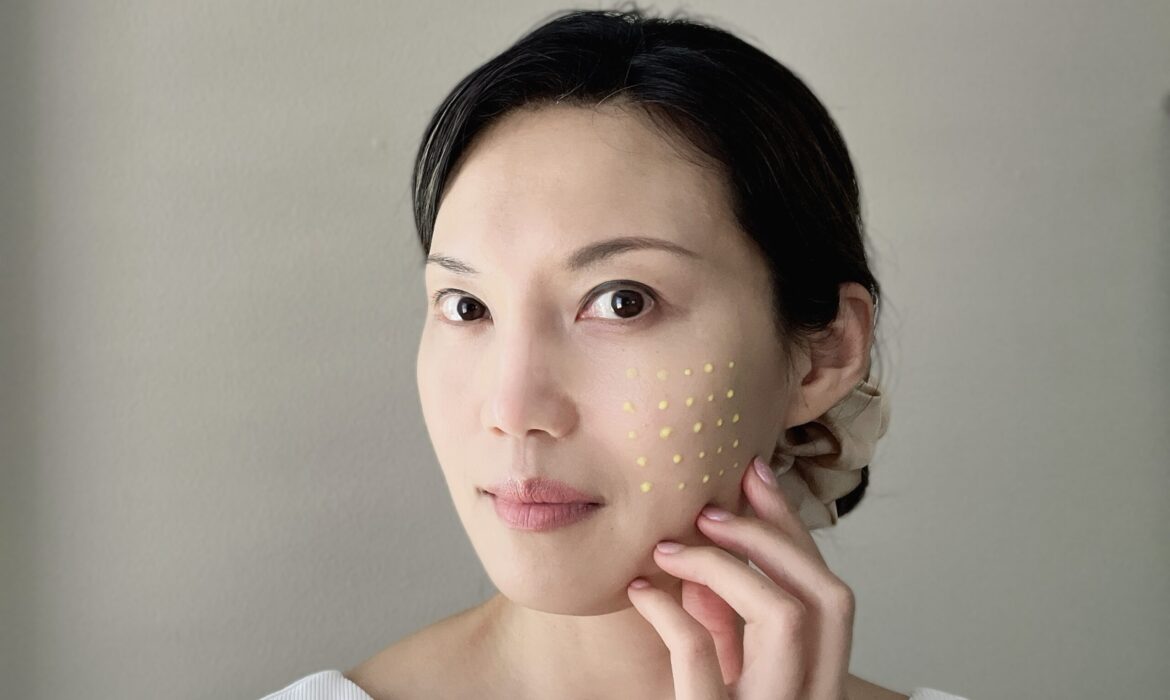Why Retinol Deserves a Spot in Your Routine
If there’s one skincare ingredient that lives up to the hype, it’s retinol. You’ve probably heard it called the “gold standard” for anti-aging, but it’s not just for fine lines and wrinkles.
A well-planned retinol skin care routine can also help with everything from dark spots to uneven texture, breakouts, and that general “blah” look our skin sometimes gets in our 30s, 40s, and 50s.
Retinol is one of those rare multitaskers that truly earns its spot in your lineup.
If you’ve ever wondered “Do I need retinol? How do I even use it without wrecking my skin?”—this post is for you.
By the end, you’ll know exactly what retinol is, how it works, the best way to add it to your skincare routine, and how to pair it with other ingredients like Vitamin C, niacinamide, or hyaluronic acid. I’ll also share my two favorite retinol serums that have personally changed my skin, plus answer the most common retinol FAQs floating around the internet.
So grab a coffee (or glass of wine, no judgment) and let’s talk retinol.
How Retinol Works: The Science Made Simple
Here’s the quick science lesson (I promise it’s not boring). Retinol penetrates the skin and converts into retinoic acid, the active form that your skin cells actually use. Once that happens, it binds to receptors in your skin cells and starts changing how they behave.
- It speeds up cell turnover, meaning old, dull cells get replaced with fresh new ones faster.
- It stimulates collagen and elastin production, which helps firm up the skin.
- It regulates melanin production, which is why it helps fade dark spots.
This isn’t just beauty marketing—these effects are backed by decades of dermatology research (Kafi et al., 2007).
Who Really Needs Retinol in Their Skincare Routine?
Honestly? Almost everyone over 30 can benefit from some form of retinol. But if you’re in your late 30s, 40s, or 50s—like many of us—it can be a total game-changer.
Retinol is especially helpful if you’re dealing with:
- Fine lines or wrinkles
- Loss of firmness (that “my skin doesn’t bounce back as quickly” feeling)
- Uneven skin tone or stubborn dark spots
- Clogged pores, breakouts, or rough texture
- Dull, tired-looking skin
If you’re nodding along to more than one of those, retinol deserves a front-row seat in your routine.
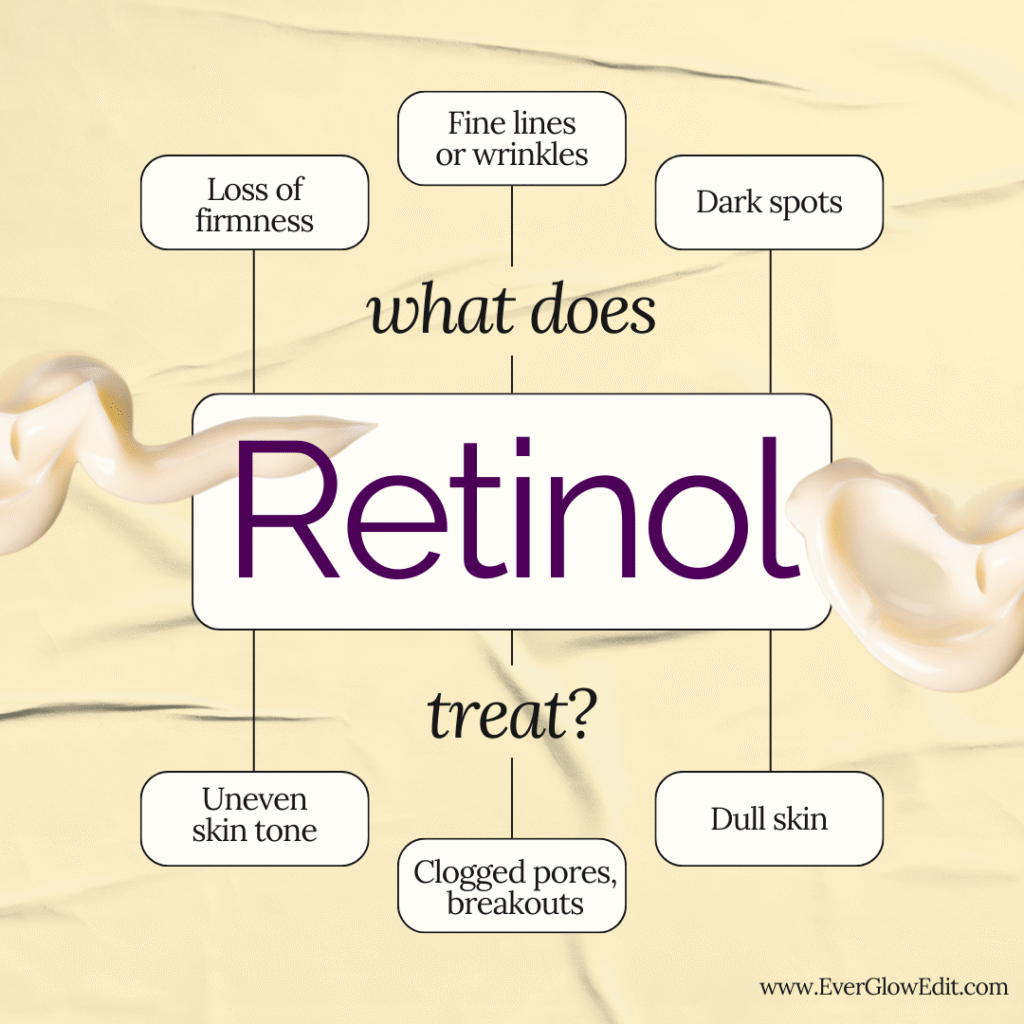
This post may contain affiliate links, which means I’ll receive a commission if you purchase through my link, at no extra cost to you. Please read full disclosure.
Where Does Retinol Fit in Your Routine?
Here’s the golden rule: retinol goes on at night, after cleansing, and before moisturizer.
A simple routine might look like this:
- Gentle cleanser
- Hydrating toner or essence (optional but nice)
- Retinol serum (pea-sized amount for your whole face)
- Moisturizer to lock it in
And in the morning? Sunscreen is non-negotiable. Retinol makes your skin more sensitive to UV, so SPF 30 or higher is your BFF.
My tip: keep the rest of your routine simple when you’re starting out. Retinol is powerful—you don’t need to overwhelm your skin with 10 other actives on the same night.
If you’re looking to build a simple yet effective skincare routine, check out this science-backed skin care routine that dermatologists swear by.
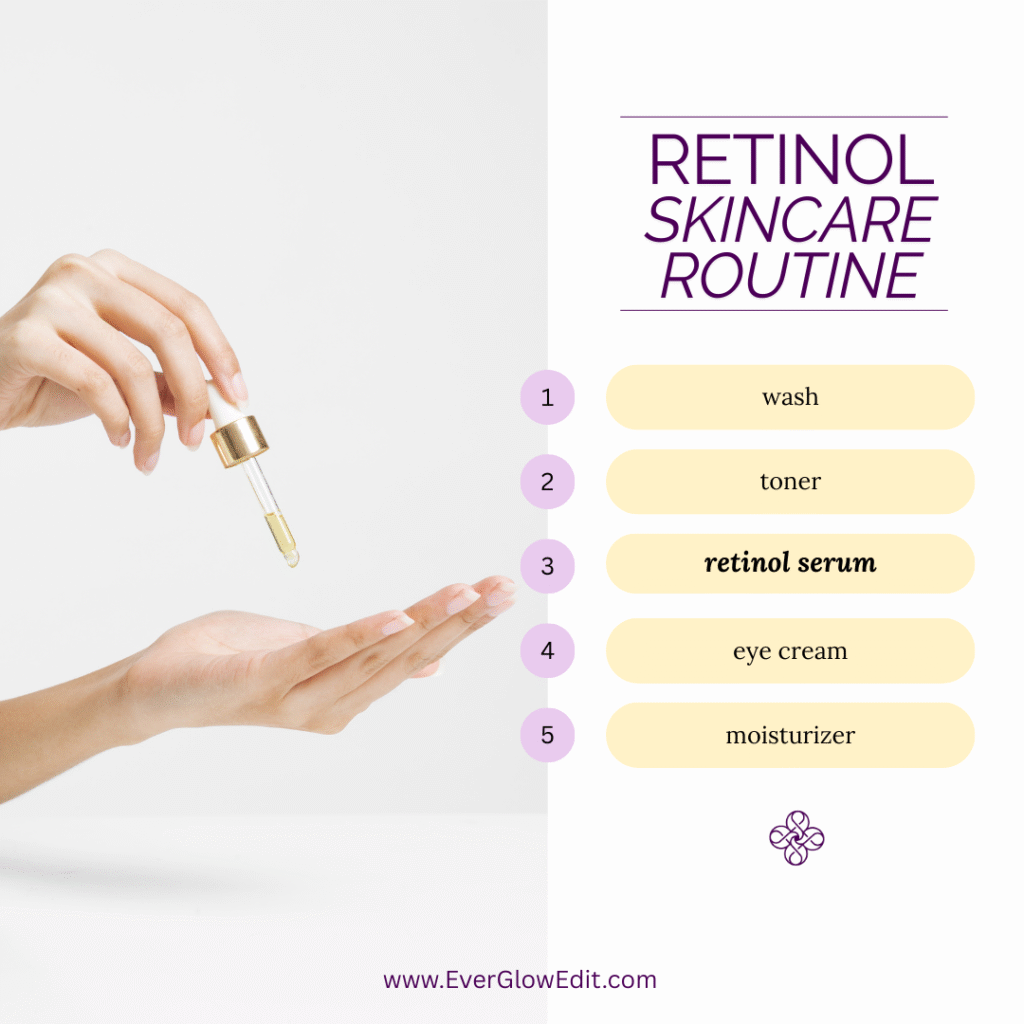
How to Start Using Retinol Without Destroying Your Skin
If you’ve heard horror stories of flaking, redness, or “the purge,” you might feel nervous. But here’s the truth: most of those issues happen when people go too hard, too fast.
Here’s a gentler approach:
- Start low and slow. Use retinol 2–3 nights a week to let your skin adjust.
- Buffer it. If your skin is sensitive, apply moisturizer first, then retinol on top.
- Listen to your skin. A little dryness at first is normal, but if you’re peeling like crazy, cut back and add more hydration.
And most importantly—be patient. Retinol isn’t instant gratification. It usually takes 8–12 weeks to see visible results, but the payoff is worth it.
My Two Favorite Retinol Serums
Now for the fun part—let’s talk products. I’ve tested quite a few retinols, but two standouts have made a noticeable difference for my skin.
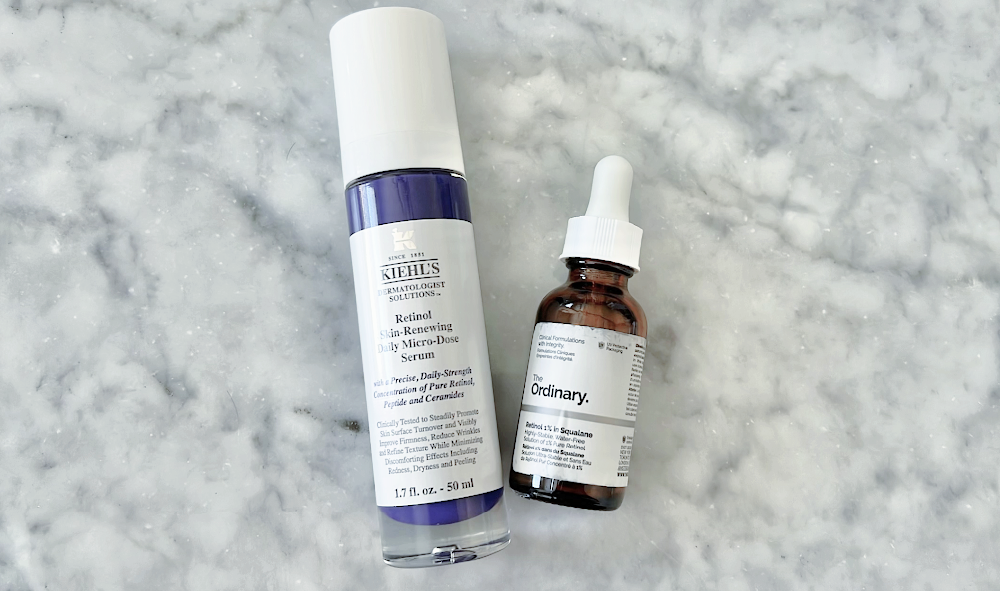
Kiehl’s Retinol Skin-Renewing Daily Micro-Dose Serum
This is my current go-to because it’s so gentle yet effective. The micro-dose technology basically gives your skin a steady trickle of retinol instead of hitting it with one big punch. That means less irritation, even if you’re sensitive.
What makes this formula stand out isn’t just the retinol itself—it’s the supporting cast. Kiehl’s paired their retinol with peptides and ceramides, which is honestly genius. Here’s why:
- Peptides: Think of these as little messengers for your skin. They help signal your cells to boost collagen and elastin production, which works beautifully alongside retinol. While retinol is busy speeding up cell turnover, peptides step in to strengthen skin’s structure and improve firmness. That combination makes results more visible and long-lasting.
- Ceramides: These are lipids (fats) that naturally occur in your skin barrier. Retinol is notorious for sometimes causing dryness or flakiness, but ceramides help prevent that by reinforcing your barrier and locking in moisture. It’s like having a built-in safety net so your skin can handle retinol without freaking out.
- Texture & Feel: The serum has a silky, lightweight texture that layers seamlessly under moisturizer and doesn’t pill under my night cream. It sinks in quickly without leaving any greasiness, which makes it a dream for layering in a routine.
Since I started using this one consistently, I’ve noticed my skin tone looks more even, and the fine lines around my eyes are softer.
Yup—I actually swap out my eye cream for this one around the eyes (hello, minimalist skincare routine!). The Kiehl’s Retinol Serum has a slightly richer texture, which makes it perfect for doubling as an eye treatment. It smooths nicely into that delicate area without feeling heavy, and I love how it pulls double duty without needing an extra step in my routine.
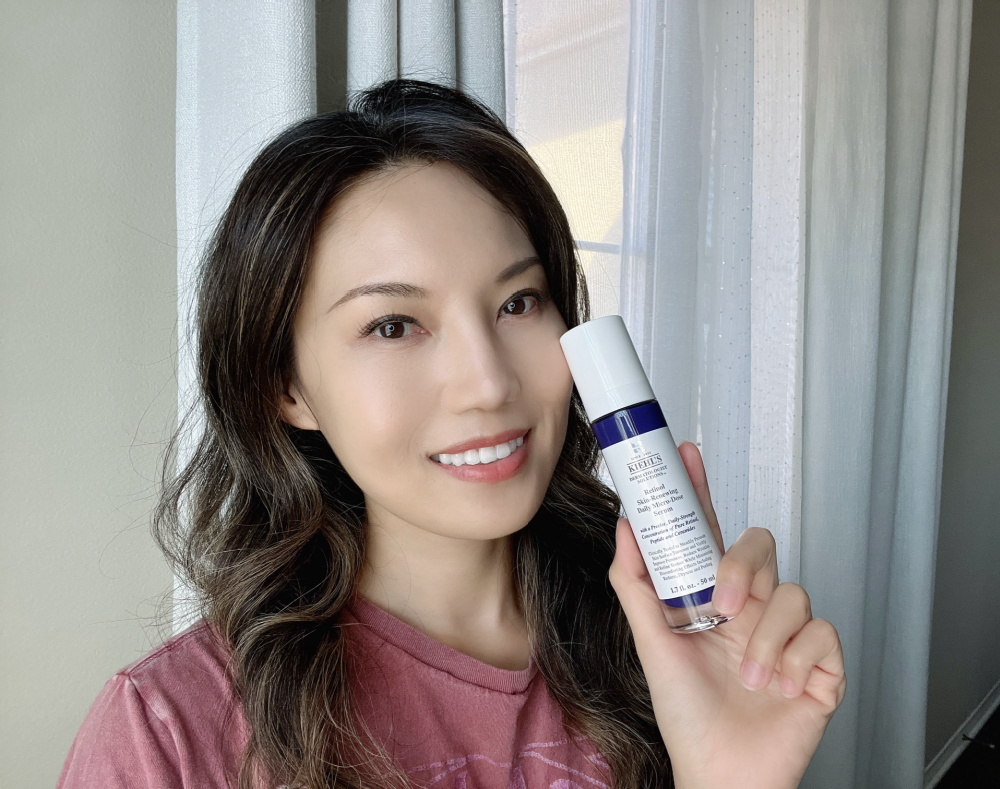
The best part? My skin doesn’t feel tight or irritated the way it has with other retinols I’ve tried. Instead, it just looks healthier overall—like I actually got a full night of sleep.
And to be fully transparent: I purchased this product myself (currently on my 2nd family-sized bottle) and have been using it in my personal routine, so this review is 100% based on my own experience.

The Ordinary Retinol 1% in Squalane
The Ordinary 1% Retinol serum is another product I purchased myself and found amazing results with. This one is stronger—definitely not beginner-friendly—but wow, does it deliver results. I like that it’s suspended in squalane, which feels nourishing and helps offset some of the dryness.
When I use this serum, my skin looks smoother, firmer, and that “tired mom dullness” I sometimes get just disappears. I don’t use it every night because it is potent, but it’s amazing when I want a visible boost in texture and radiance.
If you’re a retinol user and want to go stronger, The Ordinary 1% Retinol serum is a great choice. However, even as an advanced retinol user, I still recommend using this serum no more than 3 times a week. You can alternate 1% retinol serum with chemical exfoliants like glycolic acid & lactic acid to renew skin while protecting the skin barrier.
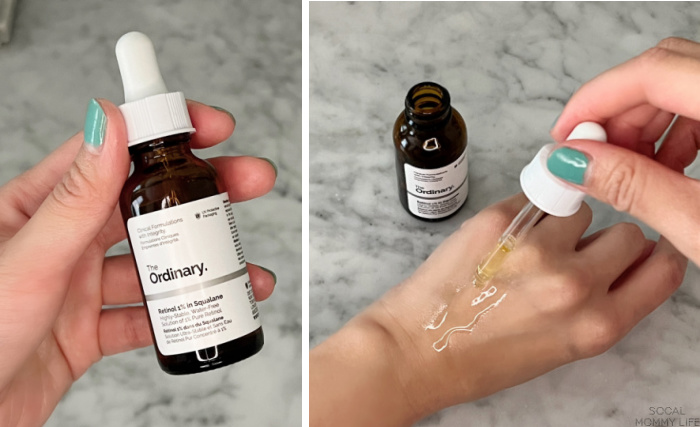

Between the two, Kiehl’s is what I recommend if you’re new to retinol or want something you can use more regularly. The Ordinary is for when you’re ready to level up.
Ingredients That Play Nice with Retinol
Here’s the thing: retinol is powerful, but it doesn’t have to work alone. Think of it like the lead singer in a band—it shines best when supported by the right backup. Some ingredients are like perfect harmony, while others can cause a little drama on your skin.
Here’s a quick cheat sheet for what pairs beautifully with retinol:
| Ingredient | Why It Works Well with Retinol | Best for… |
| Hyaluronic Acid | Deeply hydrates and balances out retinol’s drying effects | Dry or sensitive skin |
| Niacinamide | Strengthens skin barrier, reduces redness, evens tone | Uneven skin tone, sensitivity |
| Peptides | Boost collagen production, support firmness | Fine lines, loss of elasticity |
| Ceramides | Repair and protect skin barrier | Sensitive or compromised skin |
| Vitamin C (in AM) | Brightens skin, boosts antioxidant protection | Dark spots, dullness |
| Sunscreen (SPF 30+) | Protects from UV damage and irritation (non-negotiable!) | Everyone, always |
💡 Pro tip: Don’t layer vitamin C and retinol in the same routine if your skin is sensitive. Instead, use vitamin C in the morning and retinol at night—like a dream team working around the clock.
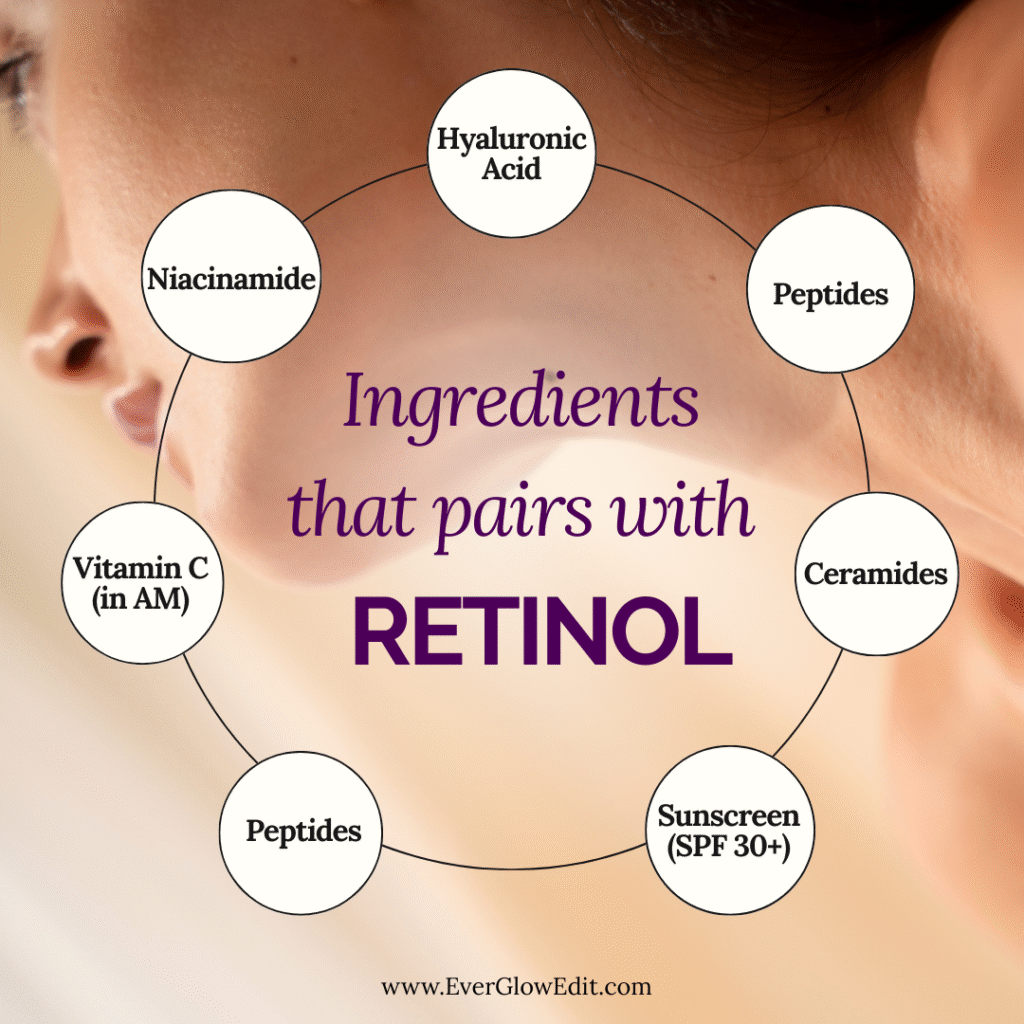
Your Most Asked Retinol Questions (Answered!)
Can I use retinol every day?
Eventually, yes. But ease into it. Start with 2–3 nights a week, then build up as your skin adjusts.
Does retinol lighten dark spots?
Yes! That’s one of its superpowers. It helps fade hyperpigmentation by speeding up cell turnover and improving skin tone.
At what age should I start using retinol?
Most dermatologists say your late 20s or early 30s is a great time to start, but it’s never too late to see benefits. I started using retinol in my late 30s, and I kind of regret that I didn’t start using it sooner.
Can I use retinol with niacinamide or hyaluronic acid?
Absolutely—both pair beautifully with retinol and make it more tolerable.
Does retinol thin the skin?
Nope, it actually thickens the dermis (the deeper layer) over time by boosting collagen. The surface layer might shed faster, but that’s a good thing.
Can I use retinol while pregnant or breastfeeding?
This is a no. Always avoid retinoids during pregnancy or breastfeeding. Retinol and retinoids, derived from vitamin A, are known to increase the risk of birth defects when used during pregnancy.
What’s the difference between retinol and prescription tretinoin?
Tretinoin is stronger and works faster, but also comes with more irritation. Retinol is the gentler, over-the-counter cousin.
Does retinol cause purging?
Sometimes. You might notice breakouts in the first few weeks as your skin adjusts, but it usually passes.
Should I use retinol in summer?
Yes, you can—but only if you’re diligent with sunscreen. Otherwise, you’re undoing all that hard work.
When will I see results?
Most people notice smoother skin in 4–6 weeks, but real changes (like fading dark spots) can take 3–6 months (Varani et al., 2000).
Final Thoughts: Why Retinol Is Worth It
At the end of the day, retinol isn’t just another skincare trend. It’s one of the most studied, proven ingredients out there—and when used consistently, it truly changes your skin.
For me, adding retinol has made my skin smoother, firmer, and brighter. It’s the reason I get compliments now on my glow, even on days when I feel exhausted.
So if you’ve been on the fence about trying retinol, consider this your sign. Start slow, keep it consistent, and pair it with sunscreen every single morning. And if you’re looking for recommendations, Kiehl’s Micro-Dose Retinol Serum is my favorite for daily use, while The Ordinary 1% Retinol in Squalane is great when you’re ready to step it up.
Your skin in five years will thank you.
References
- Kafi, R., Kwak, H. S., Schumacher, W. E., Cho, S., Hanft, V. N., Hamilton, T. A., King, A. L., Neal, J. D., Varani, J., Orringer, J. S., Kang, S., & Voorhees, J. J. (2007). Improvement of naturally aged skin with vitamin A (retinol). Archives of Dermatology, 143(5), 606–612.
- Varani, J., Warner, R. L., Gharaee-Kermani, M., Phan, S. H., Kang, S., Chung, J. H., Wang, Z. Q., Datta, S. C., Fisher, G. J., Voorhees, J. J. (2000). Vitamin A antagonizes decreased cell growth and elevated collagen-degrading matrix metalloproteinases and stimulates collagen accumulation in naturally aged human skin. Journal of Investigative Dermatology, 114(3), 480–486.

